When I was 7, a movie about darkness and light rerouted my orbit forever. One minute I was a regular kid with a vague sense of Saturday morning cartoons and dull cereal. The next, I was a scruffy-looking nerf herder smuggling hope across the galaxy in a busted freighter with a Wookiee co-pilot and a hopeless crush on a space princess with cinnamon buns stapled to her head. Somewhere along the way, a lightsaber-wielding drama king with the worst mommy issues in cinematic history froze me in carbonite, and I never fully thawed.
Narrowing this list down to just 10 movie scenes that shaped me? Yeah, that was cruel. I started with over 100 and crossed them off like I was burning bridges at the end of a noir film. There were casualties. Some classics didn’t make it. If I were in a better headspace, this list might’ve leaned more art-house than popcorn. But it’s not that kind of year.
Over the past five decades, I’ve subjected myself to nearly 5,713 films — and with a movie collection pushing 3,700 titles, it’s safe to say cinema hasn’t just been a hobby. It’s been a full-blown obsession, the kind that eats up your weekends, your budget, and more than a few relationships. While other kids were dreaming of scoring the winning goal, I was doing both — taking shots in the crease pretending to be Ken Dryden by day, and sneaking out of class to haunt the Eglinton Theater by afternoon.
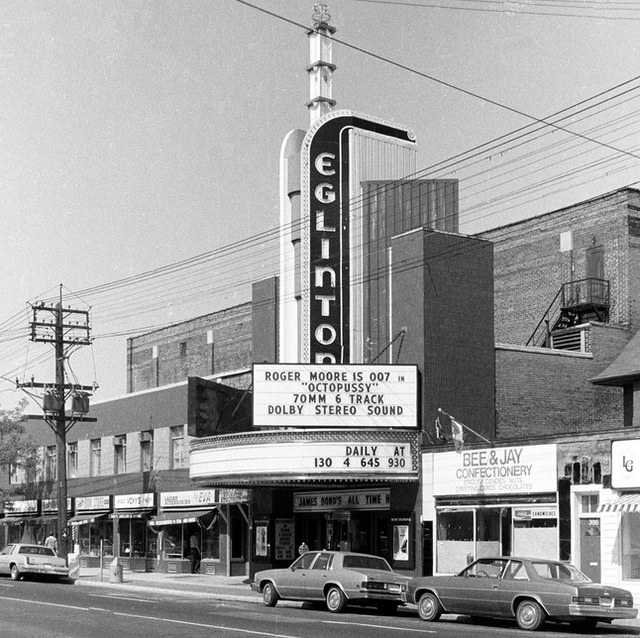
That old movie palace on Eglinton Avenue West was my sanctuary. I saw hundreds of films there growing up — some classics, some garbage, all unforgettable in their own way. It’s where I learned that life looks better on a big screen, and that sometimes the best stories don’t have happy endings — just honest ones.
I was back in Toronto recently and happened to jog past the old place. It’s an event venue now — weddings, bar mitzvahs, corporate PowerPoint snooze-fests. But for a moment, standing there, I saw it the way it used to be. The marquee. The velvet seats. The sticky floors and first kisses and cinematic gut-punches.
And damn, it hit me harder than expected. Because buildings change, cities change, but those movie moments? They stick. They haunt. They shape.
Long live the movie theater. Even if it now serves canapés instead of popcorn.
What makes a movie scene great? Cultural ubiquity helps — if it’s been parodied on The Simpsons, quoted in bars, or turned into a dorm room poster, it probably left a mark. But that doesn’t mean it hit me where it counts.
Popularity and personal resonance don’t always overlap. Case in point: Tom Cruise sliding across the living room floor in his underwear to Bob Seger in Risky Business. Iconic? Sure. Fun? Absolutely. But for me, it was more of a cautionary tale. I was doing the same thing at the time — minus the Ray-Bans — but I knew better than to go anywhere near my dad’s McIntosh system. He could tell if I so much as breathed near it from 1,000 miles away while on vacation. So yeah, it was a memorable scene, but not one that stayed lodged in my brain for the next 35 years.
Feel free to drop your own picks in the comments — but these are the scenes that burrowed in and never left. Not because they were the most famous. But because they left a scar.
10 Movie Scenes That Got Under My Skin and Never Paid Rent
Double Indemnity
Almost 80 years on, and there are still damn few films that can hold a candle — or a cigarette — to the razor-sharp brilliance of Double Indemnity. Billy Wilder’s screenplay is a masterclass in how to weaponize dialogue, back when words were bullets and every glance could kill. Barbara Stanwyck could’ve charmed (or scared) the pants off anyone with a pulse, and her delivery in this noir scorcher still sizzles. Fred MacMurray plays the sap perfectly, and Edward G. Robinson eats every scene like it’s his last meal.
Modern Hollywood seems to have forgotten that dialogue actually matters — that a script is more than just a bridge between explosions. It’s honestly appalling that there’s a whole generation out there quoting Fast & Furious sequels while having never heard the words, “How fast was I going, officer?” delivered like a loaded gun in a living room.
And if you haven’t watched this with the golden love of your life under 500-thread-count sheets, whispering lines back and forth in the dark — you haven’t lived.
Available on Amazon. Femme fatale not included.
Stalag 17
William Holden finally got his due with Stalag 17 — snagging the Oscar for playing Sefton, the cynical anti-hero with a pack of cigarettes, a towel full of contraband, and more brains than the rest of the barracks combined. Billy Wilder, in peak form, masterfully balanced razor-wire tension with gallows humor, setting the gold standard for every prisoner-of-war film that followed. Without this movie, there’s no The Great Escape, no Hogan’s Heroes, and certainly no American TV audiences confusing slapstick Nazis with comic relief for nearly a decade.
The final scene? A clinic in how to do suspense without breaking a sweat. Dialogue that still crackles, a performance that earned every inch of that golden statue, and an escape that feels more earned than most action films can manage in two hours of explosions. My favorite film of all time — no contest.
And yes, Hogan’s Heroes may have tried to keep the flame alive, but let’s be honest: Schultz may have known nothing, but Wilder knew everything.
Available on Amazon. No escape tunnel or falling on your head required.
Jaws
Mark Spitz never showed up to teach swim lessons at Forest Valley Day Camp, which feels like a missed opportunity in retrospect. So when my dad tossed me into the waters off Cape Cod in July of ‘76, my body went into full-blown panic mode. The water was maybe two or three feet deep, but my brain — still reeling from Jaws, which I’d seen the summer before — was absolutely convinced I was about to become shark tartare. Nearly 50 years later, I still watch Jaws once a year like some sort of ritual penance. And yes, I still stand on the beach just blocks from my house on the Jersey Shore, stare out into the surf, and wonder how fast I can run if I hear a cello.
Available on Amazon. Bring a towel — and maybe a flare gun.
Lawrence of Arabia
Having crossed the Sinai and stood on the shores of Aqaba staring into Eilat over dinner with Israeli and Jordanian associates, my appreciation for David Lean’s windswept, sun-scorched epic hits a lot harder at 55. I first saw it as a kid on a 28-inch Zenith that buzzed like a dying wasp and made the Arabian desert look more like a sand trap at the local muni. When the restored version hit theaters years later, I brought a date. She hated it. I, on the other hand, was transfixed. Didn’t even notice she left halfway through. My mother always said I had a thing for the brutal and the beautiful — possibly because she mated with a scorpion to produce me. It would explain a lot.
Available on Amazon. Sunscreen not included.
Enter Laughing
It must have been the wind. That line — and Elaine May’s perfect delivery — still cracks me up. She was radiant, razor-sharp, and utterly unhinged in this long-forgotten Carl Reiner gem that deserves way more love than it gets. If you’ve ever performed live, you’ll recognize the creeping horror of stage fright, but this is stage fright weaponized for comedy. Reni Santoni, in one of his best roles, absolutely kills it in the opening night scene. It’s chaotic, painful, and one of the funniest moments ever put to film. Goodbye Angela. Thank you Harriet.
Oh, and yes — the real Meathead somehow got squeezed into the cast. Thanks, Dad. Let’s be honest: Rob Reiner should’ve stuck to directing (Spinal Tap, Princess Bride, A Few Good Men… we forgive a lot). Because when he acts? Especially now? He makes buffoonery feel like a performance art piece on X (formerly known as Twitter, back when people still had attention spans).
This scene? It goes to 11. Just don’t audition without adult supervision. Check IMDB for availability.
Breaking Away
Indiana may be enjoying a second life as the spooky backdrop of Stranger Things, but my cinematic map of the Hoosier State is etched with underdog tales like Hoosiers and Breaking Away. No Demogorgons here — just working-class kids, bikes, and that slow-burn Midwestern boredom that either crushes your soul or makes you pedal like hell toward something better.
The final race? Still one of the best scenes of triumph ever captured. The Cutters, those scrappy townies, take on the preppy Indiana University elites and win — not with privilege, but with heart, grit, and enough cycling-induced pain to make a Belgian Tour rider cry. The victory is earned, every frame soaked in sweat, pride, and quiet revenge.
Dennis Quaid broods beautifully, and the late Paul Dooley gives a pitch-perfect performance as the exasperated, lovable dad who can’t quite figure out his kid or this whole Italian obsession. The charm? It never fades. Breaking Away is a love letter to the underdog — and a reminder that you can escape anything, even Bloomington, if you ride fast enough.
Available on Amazon. Sugar cream pie with Cinzano optional.
Dr. Strangelove: Or How I Learned to Stop Worrying and Love the Bomb
The most important anti-war film this side of Paths of Glory — and wouldn’t you know it, Kubrick made that one too. Dr. Strangelove is a masterclass in gallows humor, nuclear panic, and the kind of satire that burns decades after the credits roll. It’s terrifying and hilarious in equal measure, like a joke told in a fallout shelter.
Peter Sellers turns in three unforgettable performances and somehow manages to make each feel like the most important character in the film. But it’s the supporting cast that puts this one into the stratosphere: Sterling Hayden as the paranoid Brigadier General Jack D. Ripper, fixated on protecting “our precious bodily fluids”; George C. Scott chewing scenery as the over-the-top General Buck Turgidson; and Slim Pickens, who literally rides a nuclear bomb to oblivion like he’s at a rodeo in Amarillo.
The dialogue? It’s sharp enough to leave scars — intelligent, brutal, and still eerily relevant as we watch another senseless conflict unfold across Europe with Russia, Ukraine, and NATO playing global chicken. Dr. Strangelove reminds us how fast things spiral when the wrong men get power and the rest of us are left clutching our fluoridated water and hoping for the best.
Available on Amazon. Mandrake, bring me a Coke and a straight answer.
Slap Shot
If you didn’t grow up playing the frozen game, Slap Shot is the next best thing to a puck in the face. The Hanson Brothers? Straight from the Carlson brothers of the Johnstown Jets — the real brawlers with black-rimmed coke-bottle glasses and an attitude that made them infamous long before the cameras rolled. Only Steve and Jeff Carlson made it to the film; their brother Jack got called up by the WHA’s Edmonton Oilers, so Dave Hanson — another Jets tough guy — stepped in and lent his name to those legendary Hansons.
Then there’s Ogie Ogilthorpe — hockey’s poster child for chaos, inspired by Syracuse Blazers’ Bill “Goldie” Goldthorpe, one of the toughest and most notorious enforcers of the ’70s. Ogie is played by Slap Shot screenwriter Nancy Dowd’s brother, Ned, who’s quick to remind everyone that while the film draws from real life, it’s no exact replay of Goldie’s wild antics.
Director George Roy Hill staged a fake brawl, but Blazers GM Dan Belisle knew where the cameras were and went straight for Paul Newman, ending up flat on his back with fake blood while Newman landed punches that started to hurt his fingers.
With Syracuse’s Bulldogs and Blazers players filling the ranks, Slap Shot is a brutally honest, hilarious, and borderline terrifying look at hockey’s gritty underbelly — a love letter to the game for those of us who’ve lived it.
Available on Amazon. None of that stinking root beer, fancy ice shows, or deportations to Canada nonsense—just pure, unfiltered hockey mayhem.
Blade Runner
Inspired by Philip K. Dick’s landmark novel Do Androids Dream of Electric Sheep? — one of the most important sci-fi writers of the 20th century — Blade Runner isn’t just a movie; it’s a prophetic glimpse into a future that’s crashing into us faster than you can say “replicant.” Every film since about androids, replicants, and synthetics owes a debt to this noir-soaked classic, but what really makes it hit home is how eerily close we are now to that world — sex robots, drones buzzing overhead, and factory bots churning out everything from cars to chaos.
Harrison “Deckard” Ford’s first awkward interview with “Rachel,” a replicant who doesn’t even know what she is, was unsettling enough in the ’80s when AI felt like science fiction. Watch it now, and that chill isn’t from the neon rain; it’s the creeping realization that we might already be living the nightmare — or maybe the dream — Ridley Scott imagined.
Available on Amazon. Question is, can you tell the difference?
The Empire Strikes Back
Forget the toy aisle nostalgia — The Empire Strikes Back is the Star Wars film that grew up, grew darker, and delivered a gut punch straight to our collective childhoods. Yes, the frozen tundra of Hoth. Yes, bounty hunters with bad hygiene. But it’s the emotional wreckage that sticks with you — a galaxy-wide identity crisis, daddy issues that Freud wouldn’t touch, and a princess with cinnamon buns on her head who ruined me for real women for at least a decade.
This wasn’t George winging it anymore — the script got a serious upgrade thanks to Leigh Brackett and Lawrence Kasdan, who gave us actual dialogue, grown-up tension, and the kind of emotional stakes that still sting. The banter between Leia and Han? Legendary. “I happen to like nice men.” “I’m nice men.” Instant classic.
Also: carbonite. Because nothing says romance like being frozen alive right after your crush finally admits she loves you — and all you can think about while being transported in the cargo hold of Slave I is how badly you want to take her under the binary suns of Tatooine with a level of passion that would make Golden Rod short-circuit from embarrassment.
Available on Amazon. You know it’s the best one. Don’t even start.
Related Reading:
- 20 Best Film Noir Movies To Watch Before You Die (Or Get Framed For Murder)
- 25 Essential Films That Explain America Better Than Your History Teacher Ever Did
- 10 Essential Criterion Collection Movies In 4K You Need To Buy In 2025
- PODCAST: Does Anyone Even Go To The Movies Anymore?
- Sir John Williams: How I Learned To Love Movies & Hate The Bomb

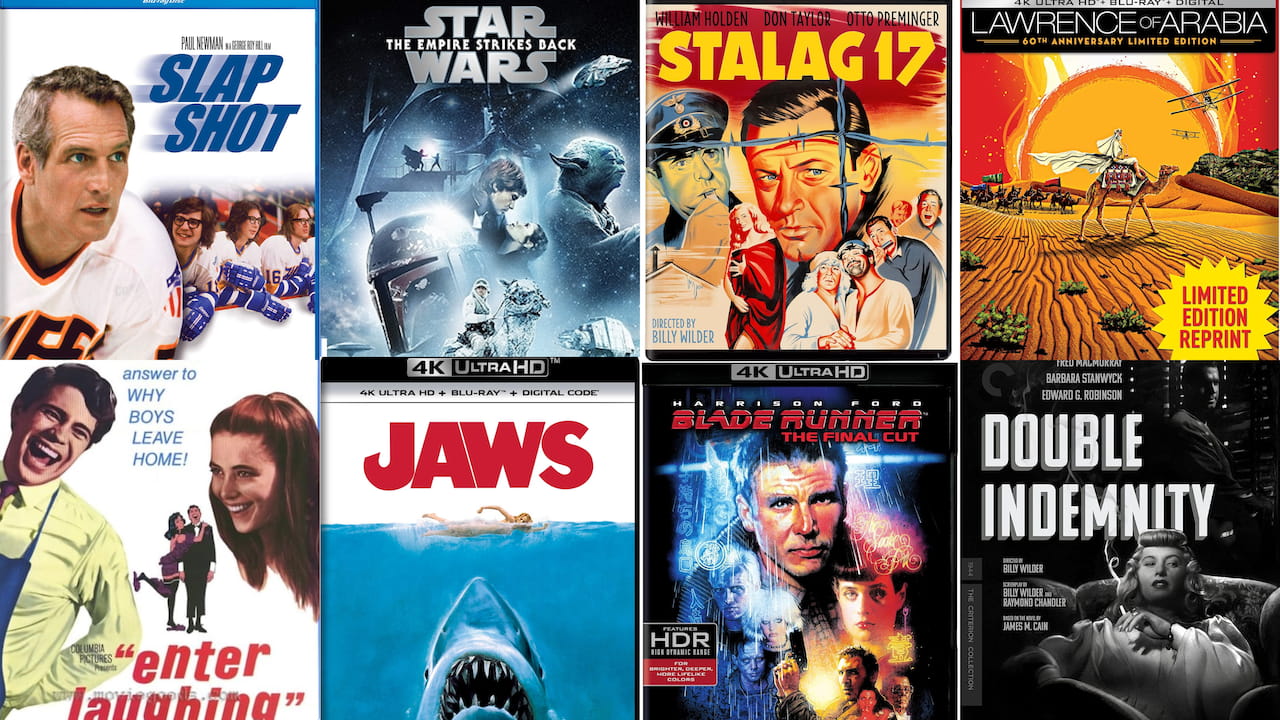




















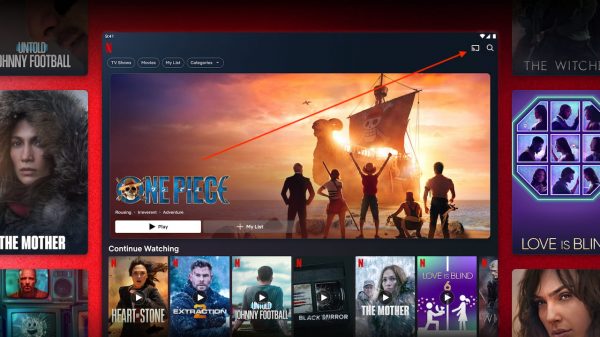

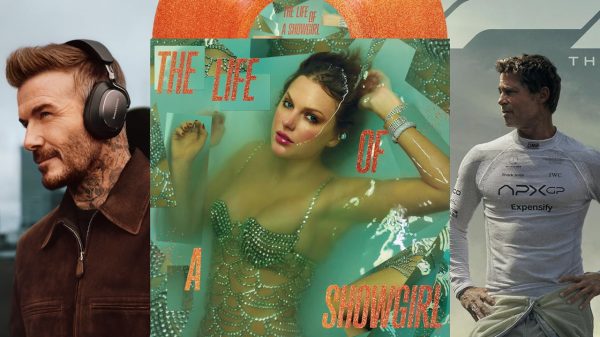

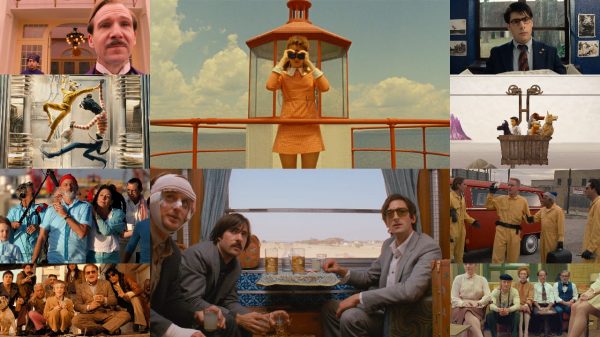


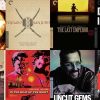
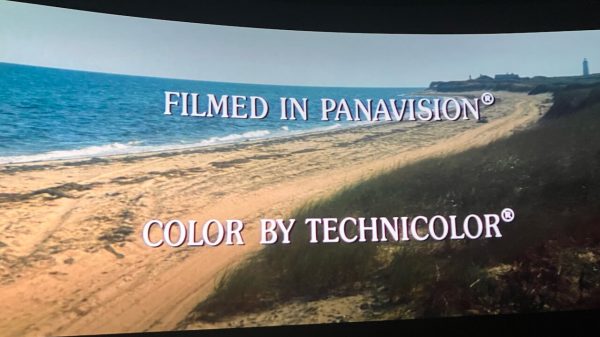
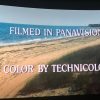

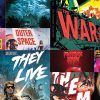

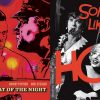











ORT
July 23, 2025 at 2:50 pm
Most of what passes (gas) for “cinema” these days is what I would term “Film Flam”.
My favorite film of all time is “Kingdom of Heaven”. I have all 3 versions and the Director’s Cut is the bestest. But Stalag 17?
Stalag 17 is great…Sefton – “Want some brandy?”
Dunbar – “Yeah.”
Sefton – “Who doesn’t.”
Lines like that are rarely, if ever, written these days. Probably because Hollyweird has snorted too many lines.
My favorite line in my favorite film is by David Thewlis as the Hospitaller Knight:
“I put no stock in religion. By the word religion I have seen the lunacy of fanatics of every denomination be called the will of God. Holiness is in right action, and courage on behalf of those who cannot defend themselves.”
In second place is the excellent film, “Quo Vadis” of 1951. There is a brief cameo of a very young Sophia Loren during triumphant return to Rome by Marcus Vinicius and the performances of Peter Ustinov as Nero and Leo Genn as Gaius Petronius Arbiter (one of my main inspirations when it comes to pure writing STYLE!) are SUPERB!
Now all we get is woke stupor heeroes with sparkly fingers. FTN.
Gaius petrORTius Arbiter